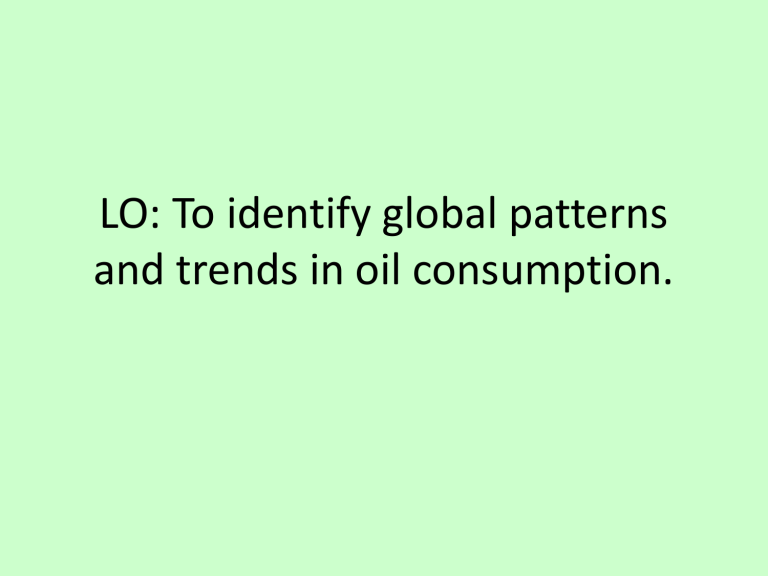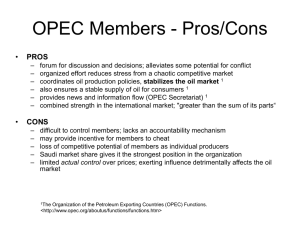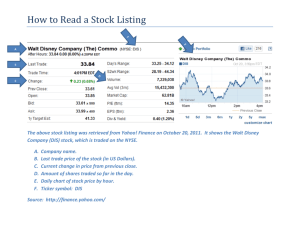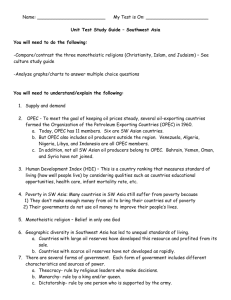Oil Consumption

LO: To identify global patterns and trends in oil consumption.
Global Consumption
United States
China
Japan
India
Russia
Saudi Arabia
Brazil
Germany
South Korea
Canada
• Top Ten Oil Consuming Nations
The consumption of oil is controlled by the major industrial MEDC's in the world.
• Such countries as Mexico, Brazil, China and
India have large populations but more importantly they are highly industrialised countries. This explains their large use of oil.
• However, the major two consumers are the
US and countries of the EU (Germany) which are the definition of the "Western" world.
Distribution of Consumption
Between 1965 and 2004, an estimated 123 billion tonnes of oil were used worldwide. For every person alive in 2002, 19.7 tonnes of oil were used over this 40 year period. The biggest oil users over this period were the United States, followed by Japan, the Russian
Federation and Germany. The lowest oil usage per person was recorded in Bangladesh,
India and Pakistan. Other territories probably used less oil than these three, but were missing data to confirm that. This map shows where oil was used, not where it was extracted. The map does not compare oil use to the reserves available. No one can be certain of the how much oil remains. We do know how much we burn
Old World vs New World??
Why does the USA consume the most?
• Use the PDF graphic to explain, using figures, why the USA consumes such a huge quantity of the world’s oil.
Factors affecting Oil Prices
• FUNDAMENTAL FACTORS- these are determined by the supply and demand of oil.
1.
Economic growth- if we can afford more oil, the prices rises.
2.
Weather- consumption dictated by the seasons in EU and
N.A.
3.
OPEC production capabilities.
4.
OPEC policies- determining how much oil will be produced and traded.
5.
5. Oil reserves of major consumers- sufficient supply will reduce pressure and keep price low.
6.
Alternative energies- ability of renewable energy to match energy provision of oil will reduce pressure and lower prices.
Factors affecting Oil Prices
• SENTIMENTAL FACTORS:
• The oil market is more sensitive to news than other markets.
• News in oil producing nations affects oil prices most eg Middle East, North Sea, USA…
• Political unrest, strikes, assassinations all affect prices, even though the supply and demand do not change.
Factors affecting Oil Prices
• TECHNICAL FACTORS:
1. Oil is traded for profit. Traders use statistics of past oil prices to calculate current prices.
2. Oil is traded in USD. When the Dollar devalues, imported oil will be cheaper when calculated in local currency. This means the price in Dollars will be higher. These changes in currency value make it hard to compare oil across markets.
http://news.bbc.co.uk/1/hi/7425489.stm
http://www.cnbc.com/2015/07/10/global-oildemand-to-slow-in-2016-iea.html
http://www.marketwatch.com/story/oildemand-growing-at-fastest-pace-in-5years-iea-2015-08-12











